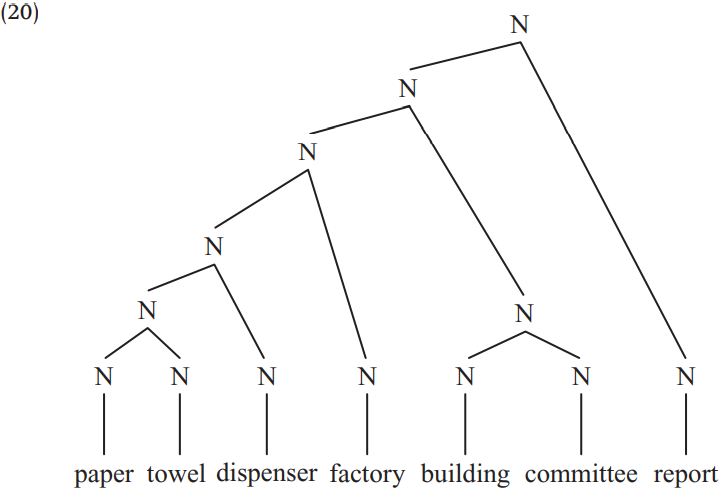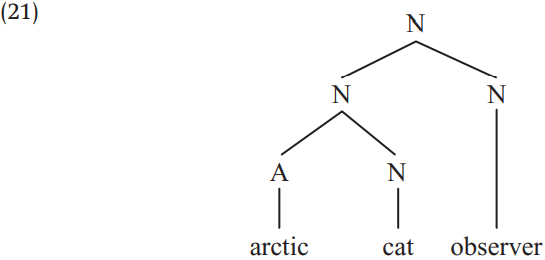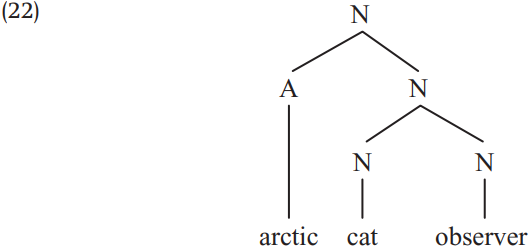

Grammar


Tenses


Present

Present Simple

Present Continuous

Present Perfect

Present Perfect Continuous


Past

Past Simple

Past Continuous

Past Perfect

Past Perfect Continuous


Future

Future Simple

Future Continuous

Future Perfect

Future Perfect Continuous


Parts Of Speech


Nouns

Countable and uncountable nouns

Verbal nouns

Singular and Plural nouns

Proper nouns

Nouns gender

Nouns definition

Concrete nouns

Abstract nouns

Common nouns

Collective nouns

Definition Of Nouns

Animate and Inanimate nouns

Nouns


Verbs

Stative and dynamic verbs

Finite and nonfinite verbs

To be verbs

Transitive and intransitive verbs

Auxiliary verbs

Modal verbs

Regular and irregular verbs

Action verbs

Verbs


Adverbs

Relative adverbs

Interrogative adverbs

Adverbs of time

Adverbs of place

Adverbs of reason

Adverbs of quantity

Adverbs of manner

Adverbs of frequency

Adverbs of affirmation

Adverbs


Adjectives

Quantitative adjective

Proper adjective

Possessive adjective

Numeral adjective

Interrogative adjective

Distributive adjective

Descriptive adjective

Demonstrative adjective


Pronouns

Subject pronoun

Relative pronoun

Reflexive pronoun

Reciprocal pronoun

Possessive pronoun

Personal pronoun

Interrogative pronoun

Indefinite pronoun

Emphatic pronoun

Distributive pronoun

Demonstrative pronoun

Pronouns


Pre Position


Preposition by function

Time preposition

Reason preposition

Possession preposition

Place preposition

Phrases preposition

Origin preposition

Measure preposition

Direction preposition

Contrast preposition

Agent preposition


Preposition by construction

Simple preposition

Phrase preposition

Double preposition

Compound preposition

prepositions


Conjunctions

Subordinating conjunction

Correlative conjunction

Coordinating conjunction

Conjunctive adverbs

conjunctions


Interjections

Express calling interjection

Phrases

Sentences


Grammar Rules

Passive and Active

Preference

Requests and offers

wishes

Be used to

Some and any

Could have done

Describing people

Giving advices

Possession

Comparative and superlative

Giving Reason

Making Suggestions

Apologizing

Forming questions

Since and for

Directions

Obligation

Adverbials

invitation

Articles

Imaginary condition

Zero conditional

First conditional

Second conditional

Third conditional

Reported speech

Demonstratives

Determiners


Linguistics

Phonetics

Phonology

Linguistics fields

Syntax

Morphology

Semantics

pragmatics

History

Writing

Grammar

Phonetics and Phonology

Semiotics


Reading Comprehension

Elementary

Intermediate

Advanced


Teaching Methods

Teaching Strategies

Assessment
Compound Structure
المؤلف:
Rochelle Lieber
المصدر:
Introducing Morphology
الجزء والصفحة:
43-3
15-1-2022
2259
Compound structure
We can look at compounds as having internal structure in precisely the same way that derived words do, and we can represent that structure in the form of word trees. The compounds windmill and hard hat would have the structures in (19):

Compounds, of course, need not be limited to two bases. Compounding is what is called a recursive process, in the sense that a compound of two bases can be compounded with another base, and this compounded with still another base, so that we can eventually obtain very complex compounds like paper towel dispenser factory building committee report. As with derived words, it is possible to show the internal structure of complex compounds using word trees. Assuming that this compound is meant to denote a report from the building committee for the paper towel dispenser factory, we might give it the structure in (20):

Some compounds can be ambiguous, and therefore can be represented by more than one structure For example, the compound arctic cat observer, might have this structure:

The way we’ve drawn this tree, the compound arctic cat has been compounded with the noun observer to make a complex compound. The compound as a whole then must mean ‘an observer of arctic cats’. But if the compound arctic cat observer were intended to mean ‘a cat observer who likes to do her observations in the arctic’, the structure of the tree would be that in (22), where cat observer is first compounded, and then arctic added in :

Often, the more complex the compound is, the greater the possibility of multiple interpretations, and therefore multiple structures.
Languages other than English frequently construct compounds on free bases just as English does, although we can see in the French and Vietnamese examples in (23) that the order of elements in the compound is sometimes different from that in English :

As we saw above, English has bound bases as well as free bases, and when we put two of them together, as in the examples in (24), we might call these forms compounds as well. Some linguists call them neo-classical compounds, as the bound bases usually derive from Greek and Latin:

In languages like Latin where, as we saw, word formation often operates on roots or stems, rather than on free forms, all compounds are formed from bound bases. Specifically, the first parts of the compounds in (25) are formed from the roots of the nouns ala ‘wing’ and capra ‘goat’, (respectively al- and capr-) plus a vowel -i- linking the two parts of the compound together:

The -i- that occurs between the two roots has no meaning, and is not the vowel that usually precedes the inflections (for these two nouns, that vowel would be -a). It is there solely to link the parts of the compound together, and is therefore sometimes called a linking element or alternatively an interfix (the latter term is less common).
 الاكثر قراءة في Morphology
الاكثر قراءة في Morphology
 اخر الاخبار
اخر الاخبار
اخبار العتبة العباسية المقدسة

الآخبار الصحية















 قسم الشؤون الفكرية يصدر كتاباً يوثق تاريخ السدانة في العتبة العباسية المقدسة
قسم الشؤون الفكرية يصدر كتاباً يوثق تاريخ السدانة في العتبة العباسية المقدسة "المهمة".. إصدار قصصي يوثّق القصص الفائزة في مسابقة فتوى الدفاع المقدسة للقصة القصيرة
"المهمة".. إصدار قصصي يوثّق القصص الفائزة في مسابقة فتوى الدفاع المقدسة للقصة القصيرة (نوافذ).. إصدار أدبي يوثق القصص الفائزة في مسابقة الإمام العسكري (عليه السلام)
(نوافذ).. إصدار أدبي يوثق القصص الفائزة في مسابقة الإمام العسكري (عليه السلام)


















